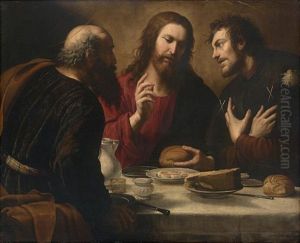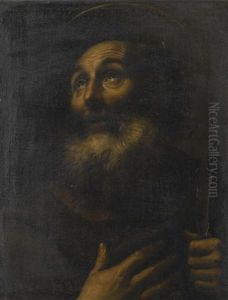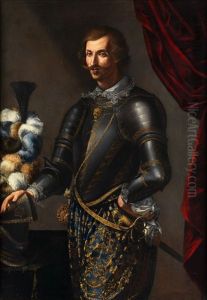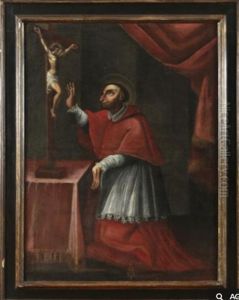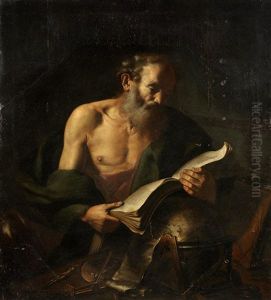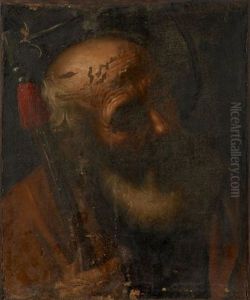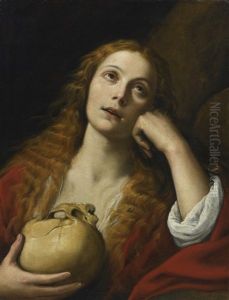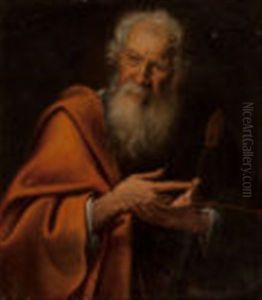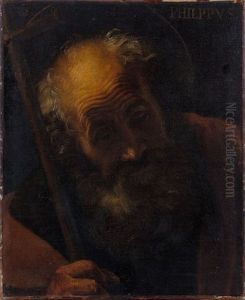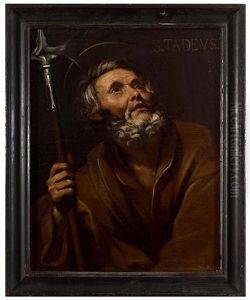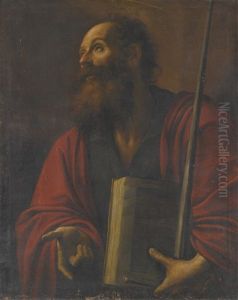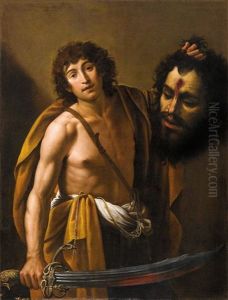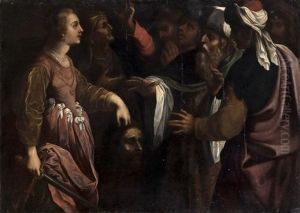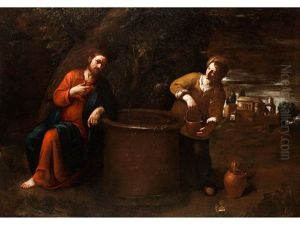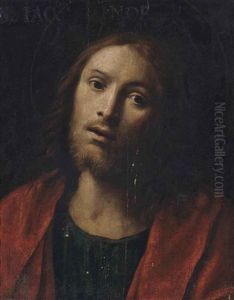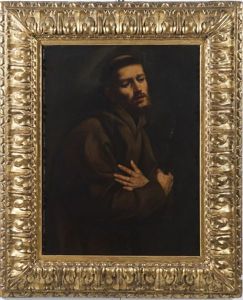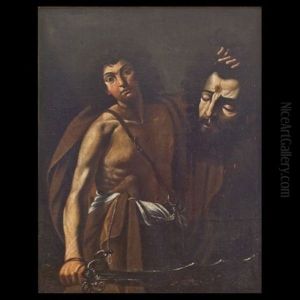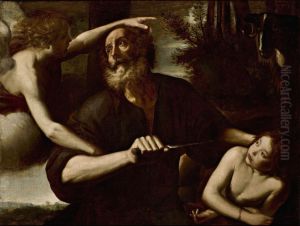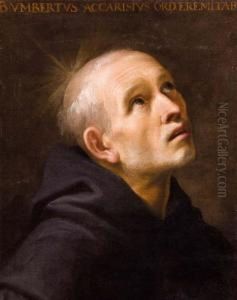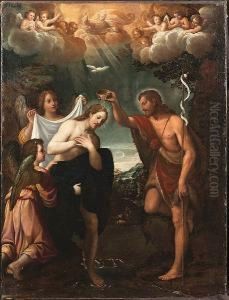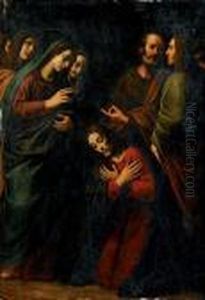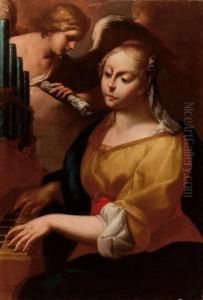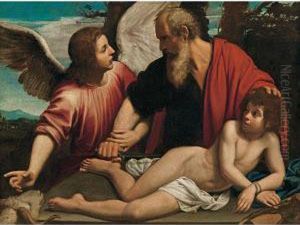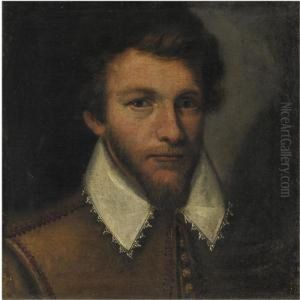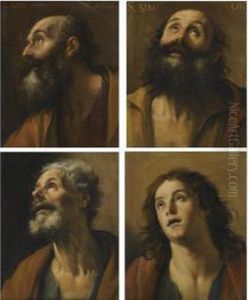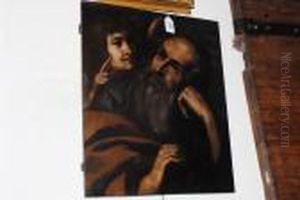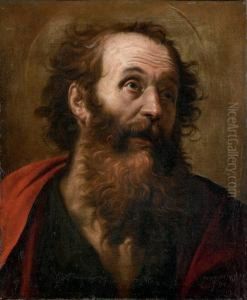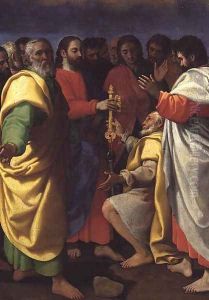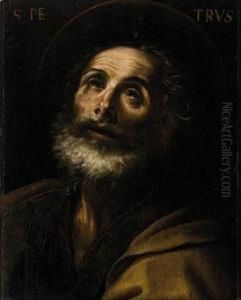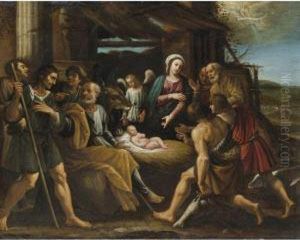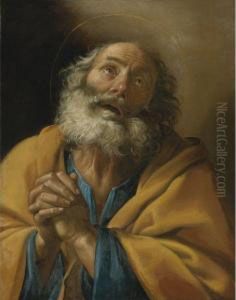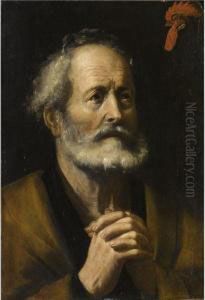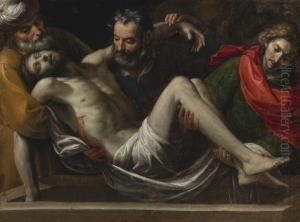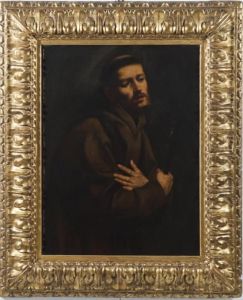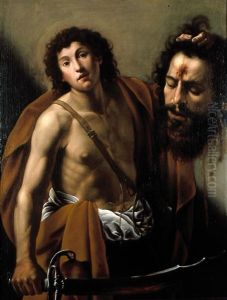Giuseppe Vermiglio Paintings
Giuseppe Vermiglio was an Italian painter of the early Baroque period, born in 1585 in Piedmont, specifically in the town of Alessandria. Little is known about his early life or training, but it is believed he may have been influenced by the artistic environment of Milan and the work of Lombard painters, which was characterized by a naturalistic approach to painting, infused with emotional intensity and a focus on dramatic lighting effects reminiscent of Caravaggio’s style. Vermiglio is indeed often associated with Caravaggism, the movement inspired by the revolutionary techniques of Caravaggio, which Vermiglio likely encountered through his travels or the diffusion of Caravaggio’s ideas in northern Italy.
His oeuvre includes religious compositions, portraits, and still lifes, but he is particularly noted for his religious scenes, which often depict moments of intense spiritual reflection or dramatic biblical events. These works are marked by their use of chiaroscuro, the strong contrast between light and dark, to achieve a deep sense of volume and form, a technique that became a hallmark of Baroque painting. Despite his considerable skill, Vermiglio did not gain the same level of fame as some of his contemporaries, and many details of his life and career remain obscure.
Vermiglio’s career unfolded primarily in Piedmont and Lombardy, where he contributed to the decoration of various churches and public buildings. His works can be found in several churches in Piedmont, including the Martiri di San Sebastiano in Milan and the cathedral of Casale Monferrato. One of his most celebrated works is the 'Martyrdom of St. Catherine', housed in the church of San Gaudenzio in Novara, which exemplifies his ability to combine dramatic narrative with meticulous attention to detail and vibrant coloration.
Giuseppe Vermiglio died in 1635. Despite the relative obscurity he suffered during his lifetime and the centuries that followed, recent scholarship has begun to shed more light on his contributions to the Baroque movement. Today, his work is appreciated for its emotional depth, technical proficiency, and its place within the broader context of Italian Baroque art. His legacy, though not as widely recognized as that of some of his peers, remains significant for the study of Caravaggist painting in northern Italy.
